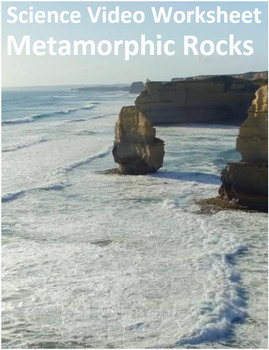Intro to Metamorphic Rocks. Video sheet, Google Forms, Easel & more (V2)
- Word Document File
- Google Apps™
- Internet Activities
- Easel Activity
- Easel Assessment

Description
This Science Video Worksheet is one page and has an answer key in a very simple format that is designed for quick correction. It also contains an Easel Activity and Assessment with the same questions that you can use within TPT or many Learning Management Systems (please see below).
This video is designed to help introduce Middle School students and beyond to metamorphic rocks.
We made this video and it is free to access on our YouTube channel, which is dedicated to educational content for children.
This is a 1 minute preview: 1 minute preview of "Intro to Metamorphic Rocks" educational science video. - YouTube
NGSS 4-ESS1-1, MS-ESS2-1, MS-ESS3-1
This video may be convenient for lesson planning for a substitute teacher, especially if needed on short notice.
Formats:
This document provides the questions in paper and multiple digital formats, directly or via links to shared drives, which you can then download.
Digital formats may save teachers time correcting homework, identifying common errors, and entering individual scores into gradebooks -- and some can teach students by giving immediate feedback. The formats include:
- Blackboard (formatted)
- Canvas (formatted)
- Easel Activity and Easel Assessments (in this TPT listing)
- Google Forms (available to copy into your Google Drive)
- Google Slides (available to copy into your Google Drive)
- Microsoft Forms (available to copy into your MS Forms Drive)
- Moodle (formatted)
- Respondus (formatted)
If you're not familiar with Easel by TPT, please see: Assigning Easel Assessments by TPT and Easel by TPT – Frequently Asked Questions.
Links to free educational resources we've made.
- 1-minute previews of our free-access K-12 science videos. We made these previews to save educators time when searching for science videos.
- Our website. We only have K-12 educational content. There are no paywalls, memberships or 3rd party advertising.
Best wishes,
Test Prep LLC






